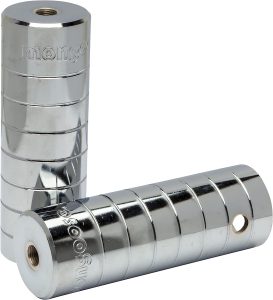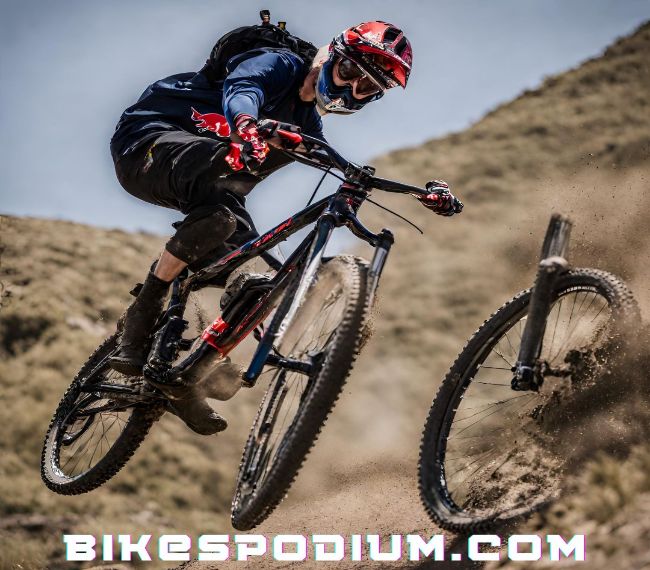
If you’ve got the adrenaline fueled spirit of a mountain biker and the urge to explore new possibilities on your two-wheeled beast, you might have wondered, can you put pegs on a mountain bike?
The answer isn’t as simple as a downhill trail, but fear not, fellow thrill-seekers, we’re diving deep into this topic with style, flair, and technical prowess!
The Pegs Dilemma
Before we plunge into the nitty-gritty, let’s understand what we’re dealing with here.
Pegs are metal extensions that are typically attached to the axles of BMX or freestyle bikes. Their primary purpose is to perform tricks like grinds, stalls, and other jaw-dropping maneuvers.
Mountain biking, on the other hand, is all about shredding rugged trails, conquering obstacles, and soaring through the wilderness. It’s a different beast altogether, and that’s where the pegs dilemma comes in.
Also Read:
How to Attach a Bike Trailer Without Coupler? A Quick Guide!
Mountain Bike Handlebars: The Ultimate Guide to Finding the Perfect Fit
Mountain Bike Cassettes: A Comprehensive Guide for Gear Enthusiasts
Are Titanium HandleBars Worth It? A Guide to Titanium MTB Bars
Pegs on a Mountain Bike? It’s Not That Simple!
Sure, you can try to fit pegs on your mountain bike, but it’s not as straightforward as slapping them on and hitting the trails. Here’s why:
1. Frame Compatibility
Mountain bikes come in various shapes and sizes, and so do the frames. Most mountain bikes are built for stability and durability on rough terrains, which means they may not have the necessary frame design to accommodate pegs.
If you’re adamant about giving it a shot, make sure to check if your frame has suitable mounting points.
2. Axle Size Matters
Unlike BMX bikes, mountain bikes often have different axle sizes, especially on the front and rear wheels.
Pegs designed for BMX bikes may not fit your mountain bike’s axles, leaving you scratching your helmet in confusion. Keep an eye on compatibility and find pegs that match your axle size.
3. Trail Terrain Troubles
Remember, mountain biking is all about tackling rocky paths, roots, and uneven terrain.
Adding pegs could potentially affect your bike’s handling and maneuverability on such trails. Before going full-on peg mode, consider the impact on your riding style and safety.
4. Weighty Woes
Every ounce matters when you’re climbing uphill or making tight turns.
Pegs can add extra weight to your bike, affecting its overall performance and agility. If you’re a weight weenie, you might want to think twice before bolting on those pegs.
Also Read:
Genesis V2100 Bike Vs Dynacraft Bike (26 Inch)
Huffy Hardtail Mountain Bike Review: Huffy Stone Mountain Bike 26 Inch
Gravity Fsx Mountain Bike Review: Gravity Fsx 1.0 Full Suspension Bike
But Wait, There’s Always a “But”!
Hold your handlebars, though! Don’t be too quick to abandon the pegs idea just yet.
While it might not be the norm, some mountain bikers have successfully embraced pegs and integrated them into their riding style.
Let’s explore the intriguing side of this “pegalicious” phenomenon:
1. Urban Mountain Biking
If your mountain biking adventures take you through urban landscapes, like street riding, skateparks, or even stair sets, pegs could be a game-changer.
Urban mountain biking often presents opportunities for creative tricks and stunts, and pegs can give you the edge to show off your skills.
2. Downhill Thrills
While downhill purists might frown at the idea of pegs, some downhill riders have found inventive ways to incorporate pegs into their rigs.
From adding an extra challenge to tackling wooden features to tweaking their style for a unique look, these riders prove that creativity knows no bounds.
3. Hardcore Bikepackers
In the realm of bikepacking and adventure touring, resourceful mountain bikers have used pegs to expand their carrying capacity. Lash on some gear, strap your camping equipment, and hit the trails with the confidence of a rugged explorer.
The Art of Peg Installation
Now that we’ve explored the possibilities, let’s talk shop about installing pegs on your mountain bike. We’re not going to leave you hanging without some practical advice:
1. Choose the Right Pegs
Selecting the appropriate pegs is crucial. Look for durable, lightweight, and compatible options designed for mountain bike use. Consider materials like aluminum or titanium for strength without the weight penalty.
2. Get the Tools
You’ll need some standard bike tools for this mission, including a pedal wrench, an Allen key set, and some grease. A little technical know-how goes a long way, but if you’re not confident, a visit to your local bike shop is always a wise choice.
3. Test and Tweak
Once your pegs are securely installed, head out to a safe and familiar location to test them out. Get a feel for how your bike handles and adjust your riding style accordingly. Remember, practice makes perfect!
The Bottom Line – To Peg or Not to Peg?
So, can you put pegs on a mountain bike? The answer is a resounding “maybe”! While it’s not the norm and might not suit every mountain biker’s style, there’s room for creativity and experimentation in the mountain biking world.
If you’re a thrill-seeker who loves the idea of pushing boundaries, pegs could open up a whole new realm of tricks and stunts.
On the flip side, if you’re all about shredding gnarly single tracks and conquering epic trails, you might find pegs to be more of a hindrance than a help.
Ultimately, it comes down to personal preference, riding style, and the type of terrain you love to conquer.
Whether you choose to peg or not, always remember to prioritize safety, enjoy the ride, and keep that mountain biking spirit alive!
So saddle up, grab your handlebars, and let the trail be your canvas of adventure – pegs or not!



